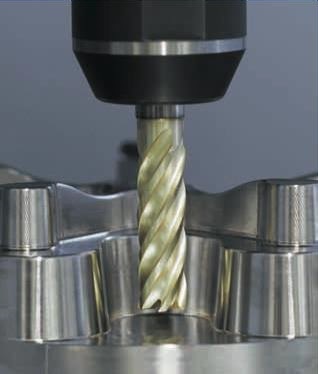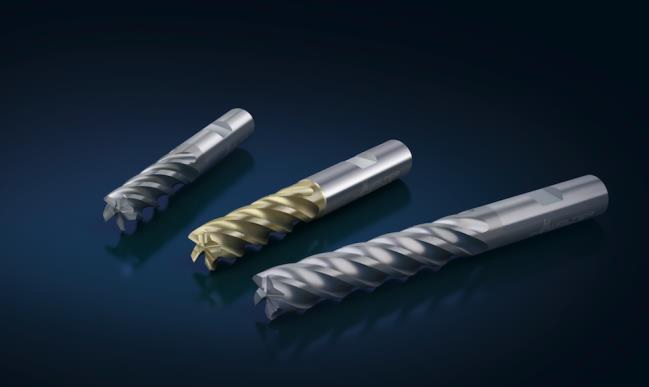A few years ago, dynamic milling was still a rarely used machining process. This is because it could not be carried out with the same level of efficiency that can be achieved today. Furthermore, it was limited to milling machines that could be controlled using CAD/CAM systems. This was state-of-the-art technology in the past, whereas nowadays CAD/CAM is the industry standard. The dynamic milling strategy has grown in importance accordingly and can now be used to increase process reliability and achieve significant improvements in productivity in any application where it makes sense with respect to the machining process. The entire machining process must be taken into consideration, however, from the workpiece to the CAD/CAM system and machine right through to the tool. This is exactly what makes changing over to dynamic milling complex. Companies can obtain support and advice from tool specialists such as Walter AG.
Increased process reliability and faster machining operations
Ever faster, ever cheaper – this is the pressure that many suppliers from various industries are finding themselves subjected to on a daily basis. However, nothing about the quality of the product should change; in fact the opposite is true. In many sectors, the demands for surface quality and dimensional stability are increasing. The requirements for process reliability are also becoming more stringent. What's more, there is an ever-growing need for materials that are particularly lightweight or heat-resistant, meaning that the proportion of materials from ISO M and ISO S material groups is also increasing. These are materials that are often difficult to machine because of these exact properties.
The size of the workpieces also influences process reliability. Workpieces with large dimensions are the norm in aircraft construction and turbine building; during machining, they are problematic for stability, and therefore for process reliability.
Dynamic milling is an excellent solution for maximum process reliability with increased productivity at the same time. Therefore an increasing number of metalworking companies are counting on this method.
High Performance Cutting versus High Dynamic Cutting
The main differences between conventional "High Performance Cutting" (HPC) and "High Dynamic Cutting" (HDC) are in the movement of the milling cutter and the forces generated. During HPC milling, the milling tool moves with relatively small depths of cut. During HDC milling, the CAD/CAM control system adapts the paths that the tool delineates during machining to the shape of the workpiece. This prevents free travel or at least reduces it. The depth of cut during HDC milling, by contrast, is significantly greater than during HPC.
The engagement angle is usually very large during HPC milling. The forces that occur in the process are accordingly high. This in turn quickly causes signs of wear to appear on the tool and the machine spindle. Dynamic milling, on the other hand, is characterised by a high level of process stability and a long tool life. The engagement angle chosen for HDC is normally small. This means that the forces which impact the tool and machine are much lower than for HPC. Higher cutting parameters, less free travel and increased process stability result in a much higher metal removal rate for HDC milling compared to HPC.
The four elements of dynamic milling
The cornerstones of the dynamic milling strategy are the milling tool used, the machine, the CAD/CAM system and the workpiece itself. The strategy can only be applied when all four factors are perfectly in sync,and this is the only way to optimise the process reliability and cost-effectiveness (metal removal rate). The cutting values, i.e. the maximum permissible radial width of cut (ae) and the engagement angle (φs), are determined by the material. The workpiece geometry in turn has a direct bearing on the length of the cutting edge (Lc), the tool diameter (Dc) and the milling strategy. The CAD/CAM software calculates all important parameters such as milling direction, optimum path guidance, adherence to the defined maximum engagement angle (φs) and the average chip thickness (hm) and adapts them to the application as required. The milling machine is "dynamic" when it has excellent acceleration characteristics around tight corners, short calculation and switching times, and a wide range of speeds. The tool itself is selected based on the machining operation and in accordance with the parameters predetermined by the material. Tools such as Walter's MD133 Supreme range of solid carbide milling cutters are specially designed to meet the requirements of dynamic milling.
Complex, requiring intensive consultation – highly efficient
Philipp Binder, Product Manager for Solid Carbide Milling at Walter AG, describes the milling strategy as follows: "Dynamic milling is a relatively complex process because all components have to be synchronised to each other. This is the only way to exploit the efficiency potential. Many companies looking to use this strategy still need our support to do this." As a tool specialist, Walter wants to help its customers when introducing and optimising their dynamic milling process. "This is why we closely collaborate with providers of CAD/CAM systems," explains Binder. "We also work together with customers on-site where required." "Walter GPS" is another tool that can help customers choose the ideal milling strategy for them: The software tool guides the user to the most cost-effective machining solution, including tool and cutting data recommendations.

Suitable workpieces, milling tools, machines and CAD/CAM systems are required for the dynamic milling strategy. With special features, such as a stable core, irregular pitch of the cutting edges, defined protection radius and chip breaker, milling cutters like Walter's MD133 Supreme are precisely tailored to this process.

Specifically developed to meet the requirements of dynamic milling: Range of solid carbide milling cutters from Walter AG














